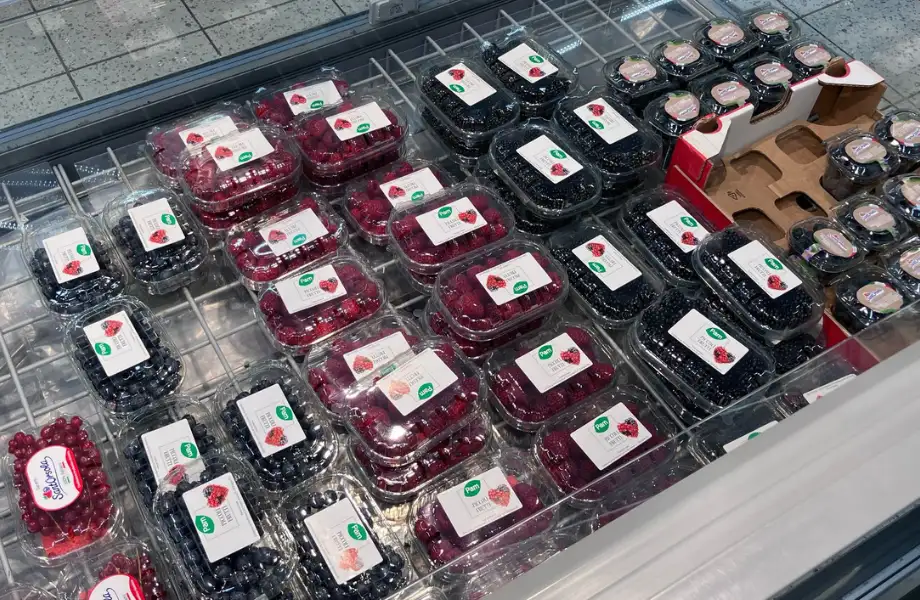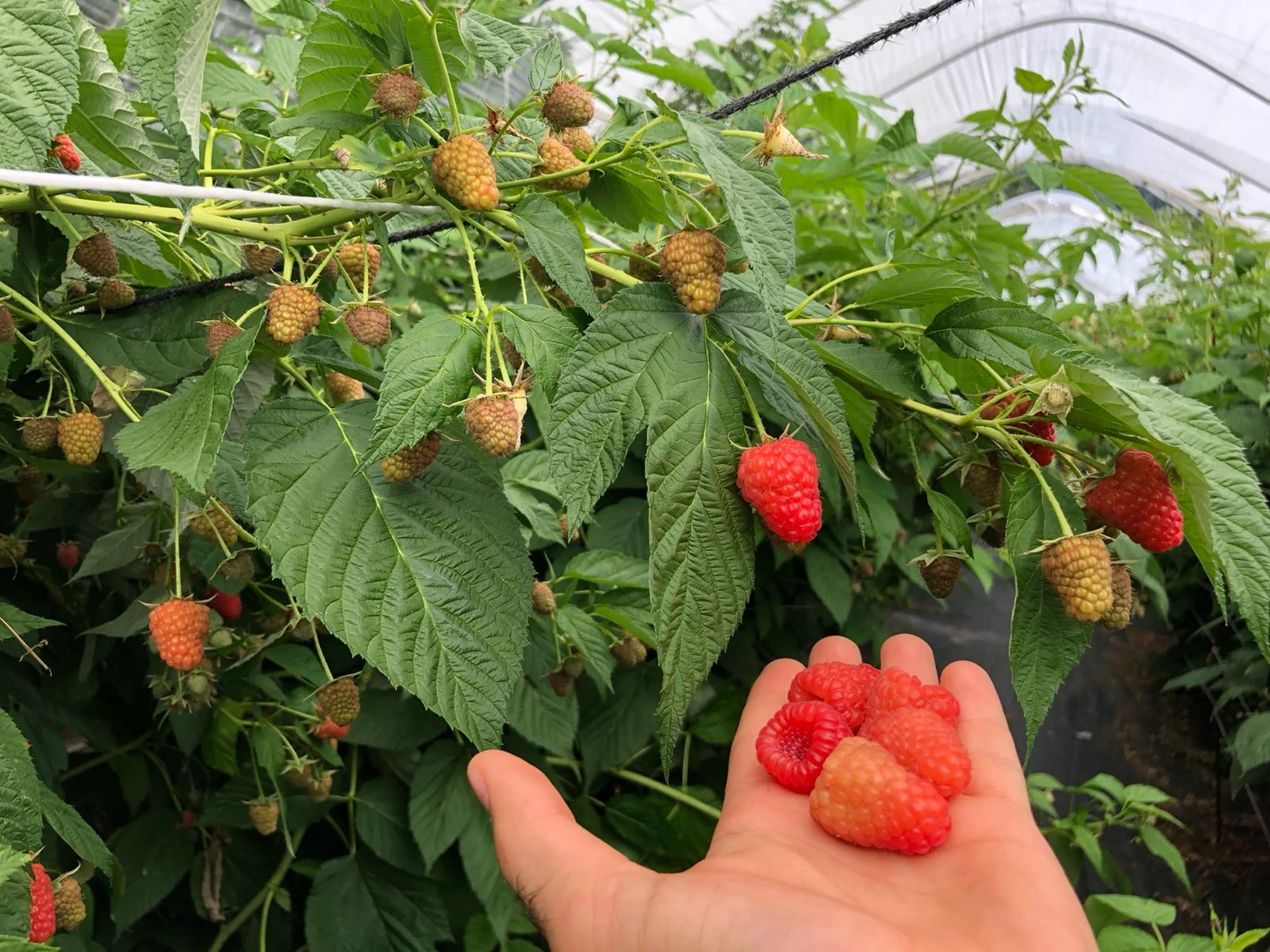As a specialist in new crop development in Ontario, a place renowned for craft beer, it is not surprising that Evan Elford is asked to grow hops. The second most requested crop, however, is perhaps less obvious.
"Haskap is generally the second most popular crop for inquiries for both commercial production and home gardens," says Elford, new crop development specialist for the Ontario Ministry of Agriculture, Food and Rural Affairs (OMAFRA), who works at the Agricultural Research Station in Simcoe.
Started in Ontario about 15 years ago, commercial haskap production has become the largest by acreage in the province, with more than 200 acres under cultivation. "However, most consumers still have no idea what a haskap berry is," says Graham Gambles, board member ofHaskap Berry Growers of Ontario, which owns 3,000 haskap plants on four acres in the Temiskaming district, north of Sudbury.

A former vegetable grower, Gambles began growing haskap in 2014 after visiting the University of Saskatchewan's research orchard, where Bob Bors, Canada's foremost expert and leader in haskap, developed a number of cultivars suited to Canadian growing conditions. "I loved the flavor of the best fruits," Gambles recalls, "superior to that of blueberries"
Haskap, also known as blue honeysuckle or honeyberry, is a fast-growing berry, similar in color and texture to blueberry, but with tart notes of raspberry and rhubarb. It grows wild in the cold boreal forests of Canada, Russia and Japan. Hakap has a high vitamin C content and is rich in polyphenols and contains more antioxidants than blueberries. These medicinal properties make the fruits and leaves a treatment for fever and stomach ache, while the frozen berries are popular in smoothies. Haskap berries can also be eaten fresh or made into jams, wines, syrups, juices, ice cream and baked goods.
In Canada, the commercial haskap industry emerged in 2007, especially in Quebec, where the fruit is known as camerise. Today, this hardy perennial plant is found everywhere from the climates of northern Ontario and Quebec to the hot, humid southwest coast of British Columbia. "Haskap is one of the few horticultural fruit crops that can that can thrive in parts of northern Ontario, which is helpful in diversifying production and markets in that part of the country," Elford says.
On average, haskap plants take four years before they produce fruit. But once they reach maturity level, the plants can produce for 25 to 40 years. "They are easy to grow, but very slow in the first few years," Gambles says.
Gambles recommends transplanting the crops in the fall because the bushes grow more the following summer after overwintering in the orchard. Better fruit set requires cross-pollination, with a suggested ratio of one pollinator plant for eight plants of the main variety. "Pollination in the fourth year is critical," Gambles says. "At that time there will be the first big crop, but only if there are many pollinators available early in the season."
Growers may consider dedicating domestic hives to ensure high yields. Maintaining a ring of hay around the orchard can encourage wild bees to nest there during wintering. Growers should plant rows three meters apart and use a plastic mulch for weed control, avoiding commercial fertilizers for the first three years in favor of 10 percent organic matter in the soil.
"Preferably well-decomposed manure," Gambles explains, "the high calcium content seems to go directly to the leaves, as plant tissue tests show. Once plants start producing, Gambles suggests pruning the lower stems to promote airflow and discourage diseases such as powdery mildew.
SO MANY IMPROVEMENTS, INVESTMENT IS MADE IN RESEARCH
The haskap varieties developed by Bors at the University of Saskatchewan can be grouped seasonally-early summer and mid-summer, for example-to allow ideal cross-pollination and extend the farmers' market and harvest season. But the choice for determining the best cultivars to plant varies from region to region and even from farm to farm.
Part of the problem, according to Elford, is the lack of experience to grow the same cultivars in regions with different zones and climatic conditions. "Many growers start with four or more cultivars to evaluate their performance for their specific end uses," Elford says, noting that new haskap cultivars have been grown as berries for eating and cooking, as opposed to some older cultivars that have been bred for ornamental purposes.
To learn more about haskap, Elford and his colleagues are conducting research on cultivars, evaluating various ripening products and studying harvest timing. Nitrogen fertility trials are being planned for haskap. Gambles finds that his customers prefer the Aurora variety because its skin is slightly harder and therefore less susceptible to bruising at harvest.
"However, it is not the first to ripen. It is about three weeks after Tundra, the earliest variety," he says. The development of new varieties with Aurora's skin resistance will allow haskap to compete with blueberries, blackberries and raspberries, Gambles says. "Otherwise, be prepared to freeze haskap and sell it in a format that can be stored for months without spoiling the product."

The growers' association's 20 or so members collaborate with research institutions such as Collège Boréal in Ontario, the University of Guelph and OMAFRA on projects that include assessing the presence of viruses in tested haskap plants, finding the most insect- and disease-resistant varieties, and how to overcome poor pollination and preserve berries after harvest.
Since 2015, haskap growers have been working with the Agriculture and Agribusiness Center for Pest Management to develop and obtain regulatory approval for fungicides against powdery mildew, herbicides to control weeds and insecticides to address pest pressure, although these options remain limited. "Growers in the industry are doing a lot of trial-and-error research on their farms," Elford says. "Birds are by far the biggest problem in haskap, as they feed on ripe and ripening berries." Rabbits and deer looking for a snack can also damage the plants, while researchers are keeping an eye on the potential threat posed by Drosophila suzukii.
GOOD PRODUCTION, BUT WATCH OUT FOR HARVESTING
When approaching haskap harvest, appearances can be deceiving: "Don't harvest when the fruits turn blue. They are green inside and they are sour," Gambles says. In Ontario, haskap fruits begin to ripen in late May, but it will take several weeks, or even a month, before the skin of the berries shows the deep purple color that indicates the sugar content is high and they are ready for harvesting, whether by hand or with a mechanical picker, depending on the size of the orchard. Once picked, the berries can be frozen directly on aluminum trays without washing them.

Gambles predicts it will be at least another 20 years before haskap berries reach grocery stores, even if only seasonally. "The problem is the need to harvest by hand," he says. Except for the Aurora variety, the fruits lighten too easily to be rolled on a mechanical picker or shaken by a blower to separate them from the leaves. And all harvested berries, even with picking aids, must then be cleaned and sorted by hand. "If you find your hands or equipment soiled with red juice, it means you only have 24 hours to sell, freeze or squeeze the day's crop," Gambles says.
THE KEY TO SUCCESS? CONSUMER FOCUS
Although interest in haskap is growing, Elford says many unknowns remain. "So far, very little replicated research has been conducted on haskap. such as general agronomy, pollination biology, pest and post-harvest management, compared to other crops at berries. We base many of our recommendations on research conducted on similar crops, but specific work on haskap needs to be completed to see if these recommendations actually provide optimal production and yield in the long run."
"The haskap industry is still in its infancy. Growers need to exchange information, both positive and negative. You learn more from disasters." Gambles advises growers to give away most of their first harvest to create a customer base in the local market. "People will remember you and look forward to buying in larger quantities the following year when when you have a huge crop to get rid of."

Evan Elford agrees that increased marketing will be key to making haskap a commercially viable berry crop. "As with any new crop, consumer recognition and education about when the crop is available and how to use it are primary considerations."
"Awareness has increased over the past decade. However, there is still a lot of work to be done for general consumer recognition. I think it is still too early to tell. We will have to see how the acreage grown changes over time, along with consumer uptake of the market, to see if it will be a successful crop in the long run."









